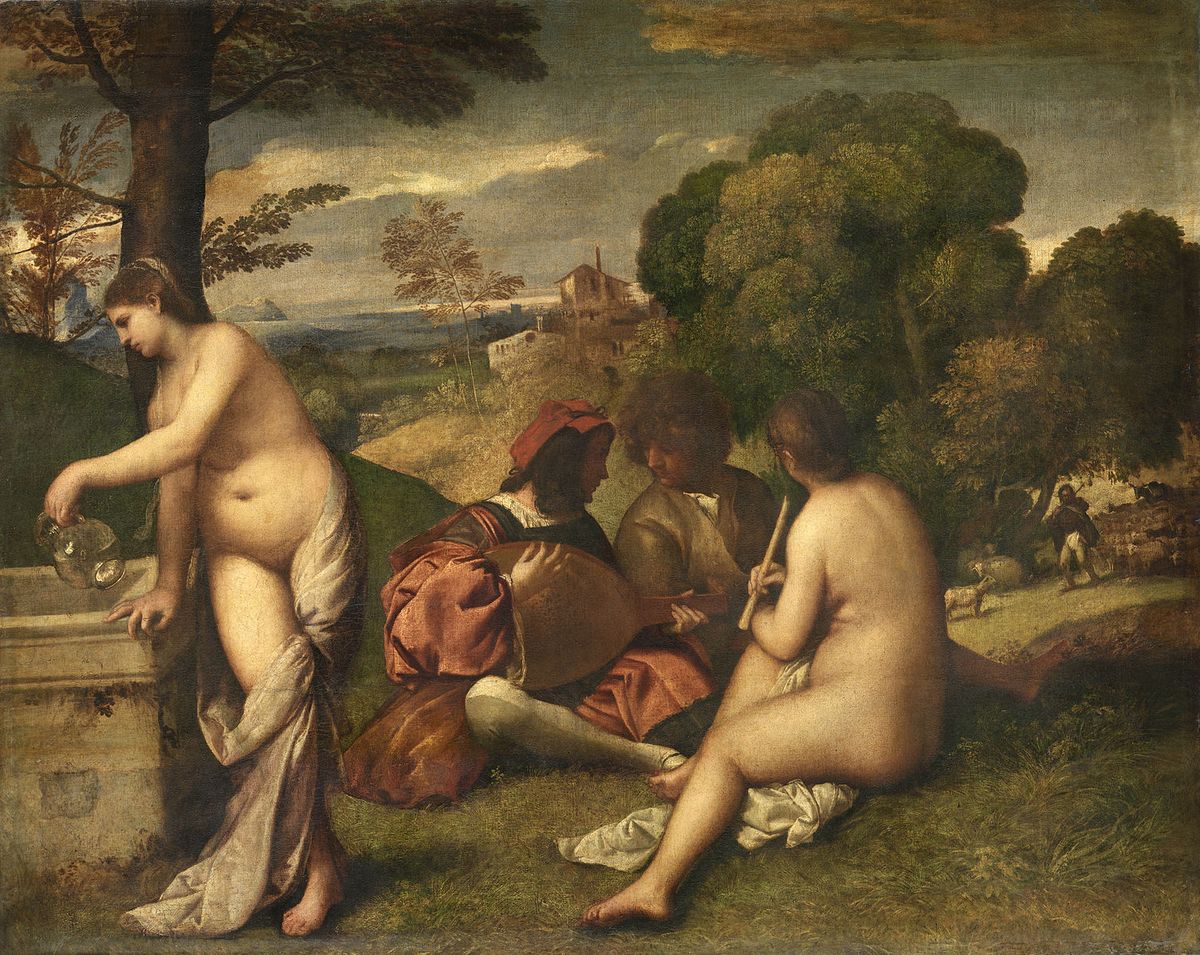In 1863 Édouard Manet borrowed a subject from, he thought, Giorgione’s (although it was Titian’s) Concert Champêtre (around 1509), in the Louvre, with its two clothed men and two nude women. He fused it with the composition of two river gods and a naiad taken from Marcantonio Raimondi’s engraving after Raphael’s Judgement of Paris (around 1510-20). Manet painted his equivalents to the river gods in contemporary French clothing and kept the naiad figure nude, adding another woman bathing in a pool behind them. The rest is art history—among its most scandalous moments, as critics greeted Le déjeuner sur l’herbe with shock and disdain at the first Salon des Refusés.
Let’s imagine Titian and Raphael were not Manet’s distant forebears but contemporaries, witnessing him taking their ideas and forms and repurposing them. I think they’d have been OK with it. They would surely have seen that, while Manet’s masterpiece “remains both recognisably deriving from, and retaining the essential elements of” their work, it was also “transformative”. They’d have regarded it as “fair use”.
The words in quotes are at the heart of a dispute between photographer Lynn Goldsmith and the Andy Warhol Foundation, on which the US Supreme Court will rule this autumn. Fair use has long protected artists’ employment of existing materials—art, photographs, popular imagery. It might take the form of homage, critique, or anything in between, as long as it is “transformative”. And copyright law aims to promote not deny creativity. But that creativity is under threat. The Second Circuit appeals court found in April 2021 that Warhol’s series depicting Prince—a classic Warholising of Lynn Goldsmith’s photograph—was not transformative enough because it clearly derived from, and retained the essential elements of, its source.
The ruling threatens a tradition, established across centuries, of appropriation, quotation and copying, exemplified by Manet’s overt Renaissance references. This point is rammed home in an amicus brief submitted to the Supreme Court by amici including the artists Barbara Kruger and Hank Willis Thomas. And they don’t stop at Manet, showing how others transformed his work—first Picasso and then others, including Mickalene Thomas. Her Le déjeuner sur l’herbe: Les Trois Femmes Noires (2010) was made for the Museum of Modern Art, New York, and riffs ingeniously on Manet’s painting.
She photographed her three clothed models adopting the poses of the seated Manet figures in MoMA’s garden, so that a sculpture by Matisse—one of his great bronze Backs—looms up like Manet’s bathing figure. Placing Black women in the art historical canon, Thomas subverts Manet’s painting by insisting that all three women meet the viewer’s gaze. As the amicus brief points out, this work’s “immediately recognisable” reference to Manet is integral to its “power and message”. Similarly, critics’ reaction to Manet’s borrowings was all the more violent because his borrowings were so knowing.
It seems obvious that when Warhol reinvigorated Goldsmith’s celebrity portrait—imbuing it with the aura he’d given Marilyn, Liz, Elvis, the car crashes, the flowers and so on—he was part of that rich appropriative and, yes, transformative tradition.
• Listen to our podcast episode in which we discuss the Warhol-Prince case here.



